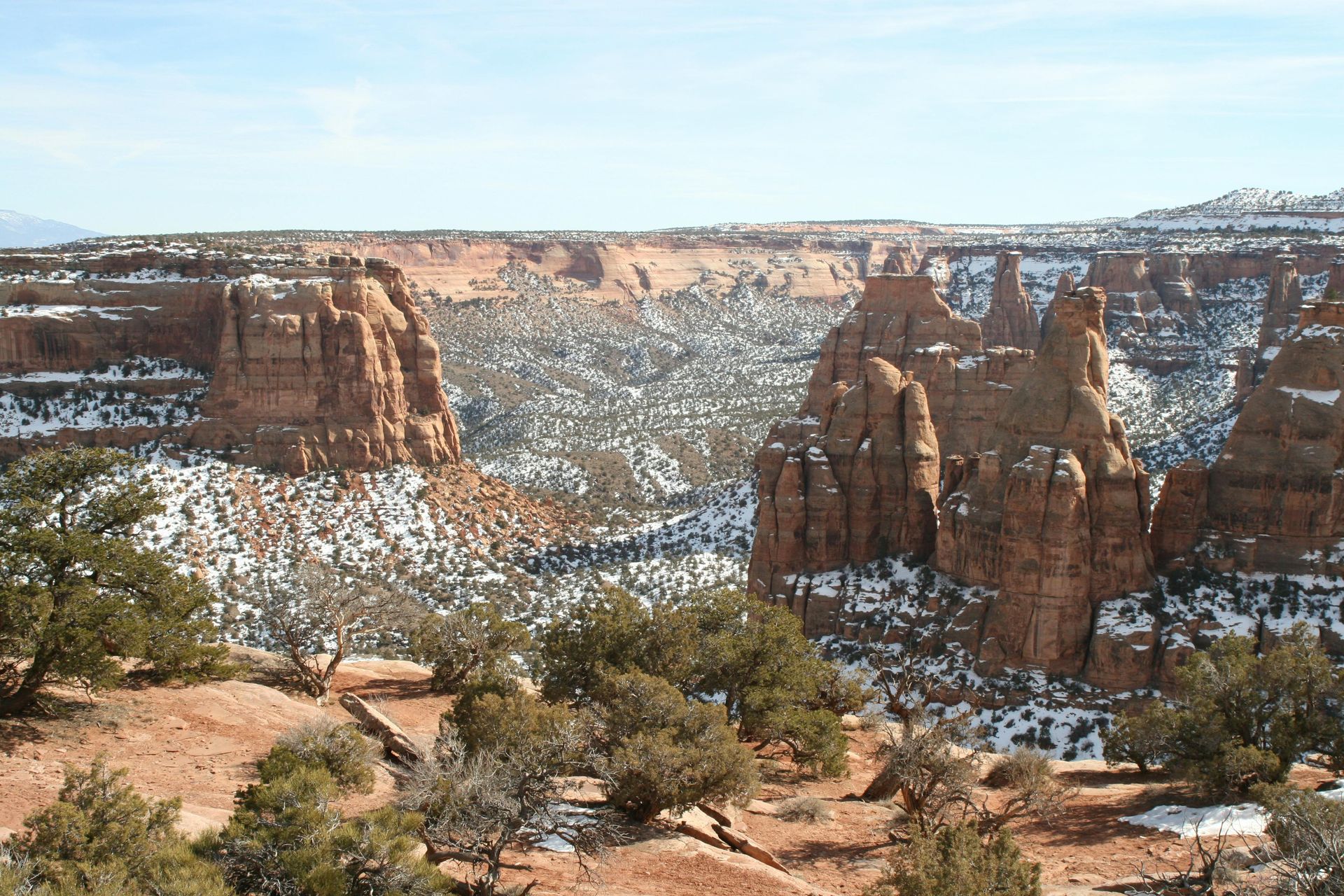❄️ The Grand Canyon in Winter: A Quiet, Frost-Kissed Wonder

When most people picture the Grand Canyon, they imagine blazing sun and summer crowds — but winter? Winter turns it into magic.
- Snow-dusted cliffs
- Crisp, golden light
- Peaceful trails without the noise
If you’ve ever dreamed of seeing the Grand Canyon like few ever do, winter is your season.
🌄 Why Visit the Grand Canyon in Winter
Most travelers come during summer, but winter reveals another side — quiet, glowing, and serene. The low winter sun sets the canyon walls ablaze in hues of gold and pink, snow softens the rugged edges, and the usual crowds disappear.
It’s not just a trip; it’s an experience of stillness and wonder.
🏔️ Top 10 Things to Do in Winter Near the Grand Canyon
1) Watch the Sunrise at Mather Point
Image suggestion: Snow-covered Mather Point glowing orange at sunrise.
Start your day early at Mather Point, where first light paints the cliffs in gold and rose. Arrive 45 minutes before sunrise to catch the best colors and enjoy your morning coffee as the snow sparkles below.
Best for: Photographers, couples, solo travelers Cost: Free (except park entry)
2) Walk the Rim Trail
Image suggestion: Couple walking along Rim Trail with footprints in snow.
Take a peaceful stroll along the Rim Trail, stretching from Grand Canyon Village to Yavapai Point. You’ll enjoy stunning views without the summer crowds — just crisp air and the sound of your boots crunching snow.
Tip: Bring microspikes or traction cleats; ice patches are common. Cost: Free.
3) Join a Scenic Tour or Mule Ride
Image suggestion: Mules descending a snowy trail with canyon backdrop.
Not up for hiking? Take a scenic bus tour along Hermit Road or experience a winter mule ride into the canyon — both unforgettable and iconic.
Typical costs: Mule rides ~$185/person; Bus tours ~$55/person. Tip: Dress warmly and reserve early.
4) Try Snow Adventures on the Kaibab Plateau
Image suggestion: Snowshoer trekking through pine forest with canyon view.
For a change of pace, strap on snowshoes or cross-country skis and explore the nearby Kaibab National Forest. The fresh air, pine scent, and glimpses of the canyon make for a perfect winter workout.
Best for: Adventurers, nature lovers Cost: Free with your own gear
5) Join a Winter Photography or Stargazing Tour
Image suggestion: Starry night sky over canyon rim, Milky Way visible.
Winter light is pure magic — soft and golden by day, crystal-clear skies by night. Capture sunrise mist, glowing snow, and star-filled horizons.
Best for: Photographers & creators Typical cost: $150–$300 Tip: Bring a tripod and red flashlight for stargazing.
6) Visit Museums & Local Attractions
Image suggestion: Warm interior of Yavapai Museum overlooking snowy canyon.
If snow or wind rolls in, head indoors! Explore the Yavapai Geology Museum, Tusayan Museum & Ruins, or catch the IMAX film in Tusayan.
Cost: Mostly free or small admission Great for: Families and rest days
7) Take a Helicopter Tour Over a Snowy Canyon
Image suggestion: Helicopter soaring above snow-tipped canyon walls.
Seeing the canyon from above is always breathtaking — but in winter, it’s surreal. Clear skies and snow patterns highlight the canyon’s depth like a living painting.
Typical cost: $250–$300 per person Best light: Mid-morning
8) Go on a Ranger-Led Walk
Image suggestion: Ranger leading small winter tour near Yavapai Point.
Join a free ranger program to learn about the canyon’s geology, wildlife, and Native history. Ranger walks are available through the South Rim Visitor Center, weather permitting.
Cost: Free Tip: Check schedules daily at the Visitor Center.
9) Explore the Rim at Sunset
Image suggestion: Golden sunset washing across canyon with snowy edges.
Sunsets hit differently in winter — vibrant reds and long shadows across the rim. Bundle up and enjoy the glow from Hopi or Lipan Point. You’ll often have the view almost to yourself.
10) Experience the Silence
Image suggestion: Traveler standing alone at snowy overlook, sunset glow washing over canyon.
Sometimes, the best thing to do is nothing at all. Listen to the quiet. Breathe the thin air. Feel the power of the landscape as it rests under snow. This is the Grand Canyon at peace — and it’s unforgettable.
🧥 Weather, Packing & Rim Access
Typical Winter Weather
- Temperatures: 30–45 °F (–1 to 7 °C) daytime, teens at night
- Snow & ice: Common on roads and trails
- Daylight: Shorter days = more golden hour light
North vs. South Rim
- 🚫 North Rim: Closed from mid-October to mid-May
- ✅ South Rim: Open year-round
What to Pack
- Warm layers (base + fleece + waterproof shell)
- Insulated gloves & hat
- Waterproof hiking boots + traction cleats
- Sunglasses (snow glare!)
- Thermos & reusable water bottle
- Extra camera batteries
- Map or GPS (trail signs may be buried)
Image suggestion: Boots, gloves, hat, thermos, and camera on a snowy bench.
🚗 Safety & Transport Tips
- Check road and weather conditions at nps.gov/grca
- Use AWD or tire chains during storms
- Some shuttles pause in winter — confirm schedules
- Walk carefully on icy paths; use traction cleats
- Stay hydrated and take it slow
- Tell someone your route before hiking
Image suggestion: SUV driving cautiously on snow-lined Grand Canyon road.
❤️ Why Winter Is Special
No crowds. No noise. Just you, the snow, and one of the world’s greatest wonders at rest.
Winter transforms the Grand Canyon into a private sanctuary — crisp, calm, and wildly beautiful. Bundle up, breathe deep, and let this season remind you what peace feels like. ❄️🌄
Image suggestion: Traveler gazing at golden canyon horizon in winter.
📍 Quick Info
- Location: Grand Canyon National Park – South Rim
- Best months: December – February
- Nearby stays: Cozy off-grid A-frames, cabins, and lodges in Williams or Tusayan
